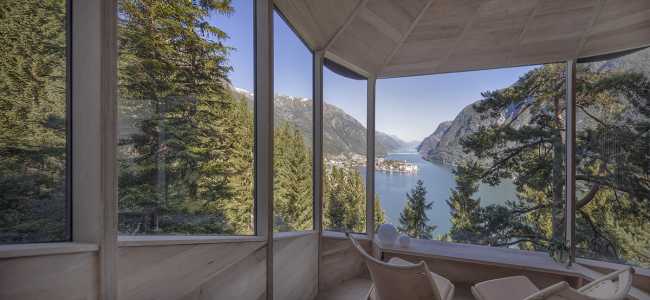A walk that prepares us for the refuge
The journey to the Woodnest site begins with a picturesque 20-minute walk from the town of Odda, on the edge of the fjord, crossing a forest and following a steep winding path. This route introduces the visitor to the design philosophy, gradually preparing for immersion in architecture that blends seamlessly with the landscape. Each treehouse is accessible through a small wooden bridge, serving as a link between the ground and the structure, guiding the guest through a transition experience from the ground space to the canopy of the century-old trees. This project stands out among the most striking sustainable architecture projects, where the interaction between construction and natural context is a fundamental element.






















